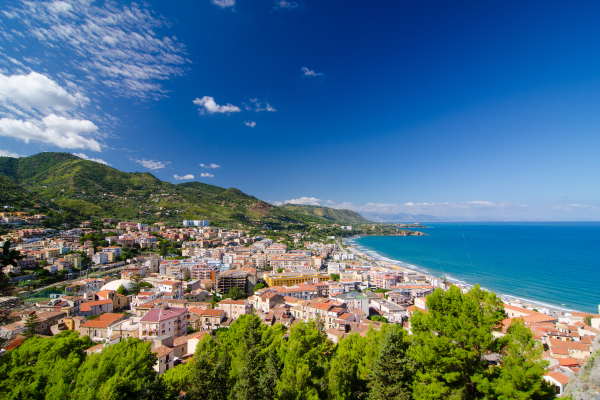Exploring Sicily: Top Destinations and Scenic Wonders
 Sicily, the largest island in the Mediterranean, offers a diverse array of regions each with its own unique charm. Which cities should you visit and what delights await? Discover the wonders of this fascinating Italian island in the Tyrrhenian Sea.
Sicily, the largest island in the Mediterranean, offers a diverse array of regions each with its own unique charm. Which cities should you visit and what delights await? Discover the wonders of this fascinating Italian island in the Tyrrhenian Sea.Agrigento – The Valley of Temples
Agrigento, situated on Sicily's southern coast, is renowned for its well-preserved Greek temples. These ancient structures have withstood earthquakes that have struck Sicily over the centuries. The Valley of Temples spans an impressive 1800 hectares, divided into eastern and western sections by a visitor bridge. Key highlights include the oldest temple, the Temple of Hercules, built in the 5th century BC, the well-preserved Temple of Concordia, and the Doric Temple of Zeus.
Taormina
Nestled on a hillside, Taormina draws tourists with its historical sites, such as the Greek Theatre ruins and the 13th-century Cathedral of St. Nicholas of Bari. Visitors can also enjoy panoramic views of Mount Etna and the surrounding hills. The picturesque Isola Bella beach is another highlight, providing stunning vistas both up close and from afar.
Mount Etna
Mount Etna, standing over 3300 meters high, is Europe's largest active volcano and a UNESCO World Heritage Site. Its spectacular eruptions occasionally release smoke, ash, and lava. On clear days, Etna offers breathtaking views of Sicily's coastline and the Aeolian Islands. The ascent to the summit provides an unforgettable experience, with lush vegetation on one side and lunar landscapes on the other. The cable car reaches up to 2500 meters, with further exploration possible on foot or by off-road vehicle to Torre del Filosofo.
Cefalu
Cefalu boasts some of Sicily's most beautiful beaches, charming streets filled with boutiques and restaurants, and a rich historical heritage. The town, named after the Greek word for "head" due to its location at the base of a massive rock, offers attractions like the ruins of the Temple of Diana and the impressive Norman-style Cathedral of Cefalu, built in the 12th century.
San Vito Lo Capo
Located on Sicily's northwest coast, San Vito Lo Capo is known for its light-sand beach, often regarded as the most beautiful on the island. The crystal-clear, azure waters and the natural beauty of the Zingaro Nature Reserve create an idyllic vacation setting. The town is also a hub for water sports and hosts cultural events like the annual Cous Cous Fest in September.
Palermo
Palermo, Sicily's capital, is a cultural and economic center, featuring a blend of historical landmarks and modern amenities. Notable sites include remnants of Roman walls, Gothic, Renaissance, and Baroque churches, the Norman Royal Palace, and the Teatro Massimo. The city's vibrant culinary scene highlights fresh seafood and local produce, with specialties like almond wine.
Syracuse
Syracuse, the birthplace of Archimedes, has a rich history as a Greek colony and later a Roman stronghold. The historic island of Ortigia, connected by the Ponte Nuovo bridge, features remnants of ancient Greek temples, the Duomo Square, the Villa Reimann, and the Vermexio Palace. The archaeological site includes a Greek amphitheater, the intriguing Ear of Dionysius cave, and other historical landmarks.
Noto
Noto, in the province of Syracuse, is renowned for its late Baroque architecture, rebuilt after the 1693 earthquake. The city’s highlights include the reconstructed Cathedral of St. Nicholas, the Church of San Carlo Borromeo, and the impressive Palazzo Ducezio. Most buildings are made from stone, giving the city a regal appearance, with aristocratic palaces situated at the top and the lower classes on the outskirts.
Ragusa
Ragusa, situated on a scenic hilltop, features a historic center with UNESCO-listed cathedrals, churches, and charming narrow streets. The lush Giardino Ibleo offers picturesque gardens perfect for photos. The city's bridges and staircases connect various hilltop areas, earning Ragusa the nickname "the city of bridges."
Modica
Modica, a baroque city in Ragusa province, dates back to the 3rd century BC. Heavily damaged by the 1693 earthquake, it was rebuilt in late Baroque style. The city comprises two parts: the old town with the renowned San Giorgio Cathedral and the newer Modica Bassa, centered around Corso Umberto. The richly gilded palaces and intricate sculptures are notable attractions.
Trapani
Trapani, located on Sicily's west coast, offers stylish landmarks such as the Cathedral of St. Lawrence, beautiful churches, and the Triton Fountain. The city's coastal location provides opportunities for water sports and scenic boat trips. Nearby, the striking salt pans with their pink hues and historic windmills are a must-see.
Erice
Erice, the "medieval gem of Sicily," sits in the Trapani province. The town, named after the mythological Eryx, boasts ancient sites like the Castle of Venus, built on the site of a former temple, and the Pepoli Castle. Perched on Monte San Giuliano at 751 meters above sea level, Erice offers stunning views of surrounding valleys, the Tyrrhenian Sea, and the Aegadian Islands.
Aegadian Islands
The Aegadian Islands, a small archipelago off Sicily's west coast near Trapani, consist of Favignana, Levanzo, Marettimo, and two smaller islands. They feature crystal-clear waters, rocky landscapes, and ancient Neolithic cave paintings. Favignana’s Monte Santa Caterina hosts an annual tuna fishing ritual, while the islands' clear waters are perfect for diving and yachting.
Explore these incredible destinations in Sicily to experience the island's rich history, stunning landscapes, and vibrant culture.









